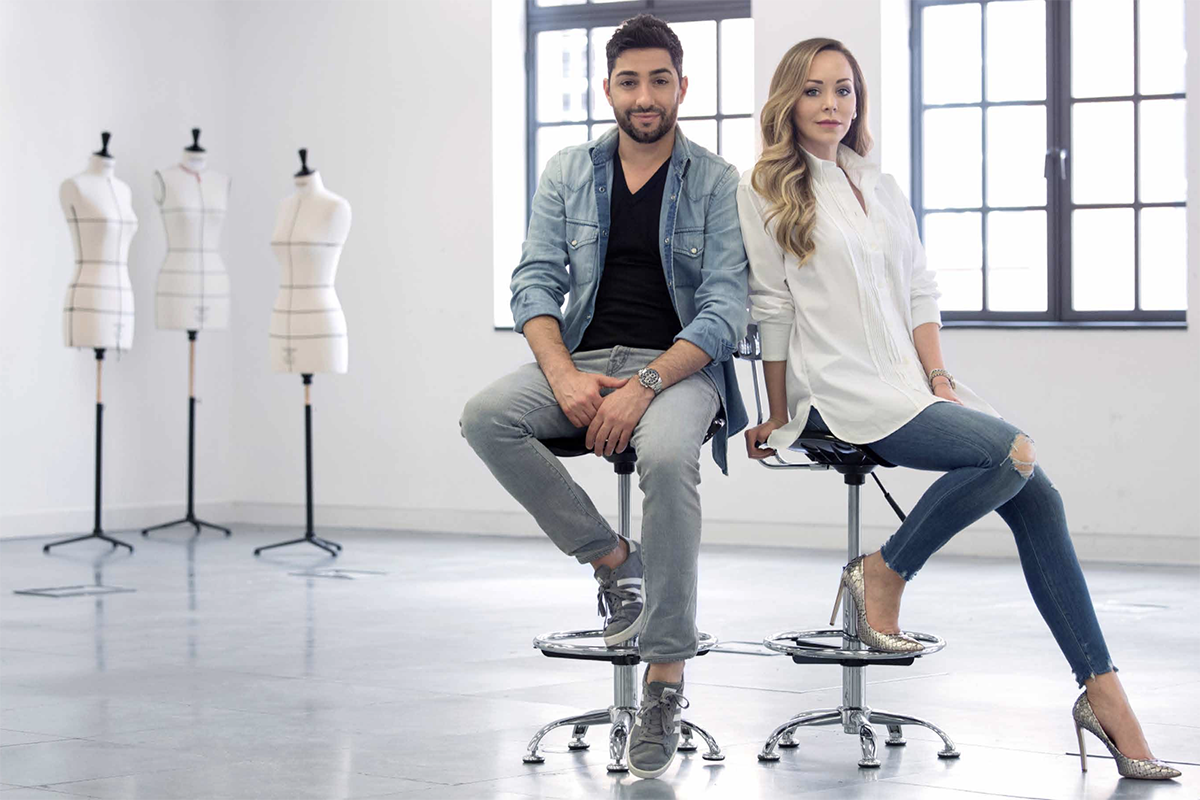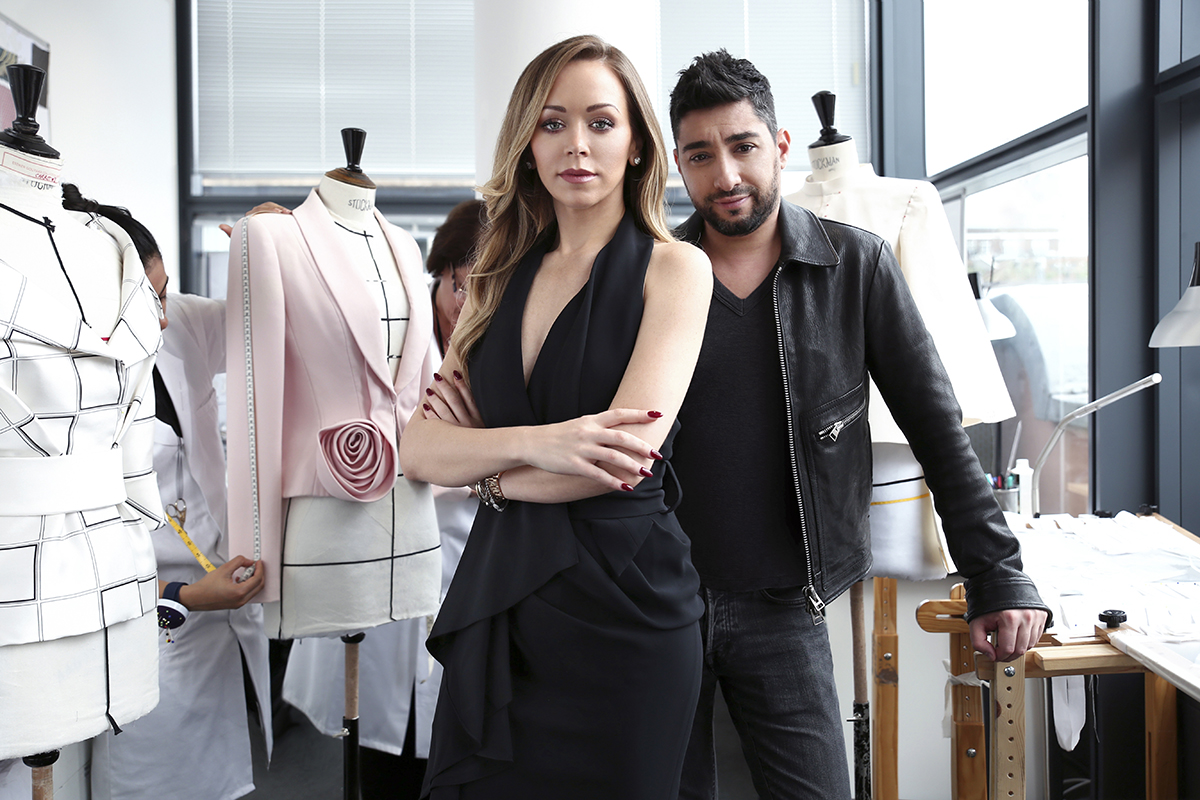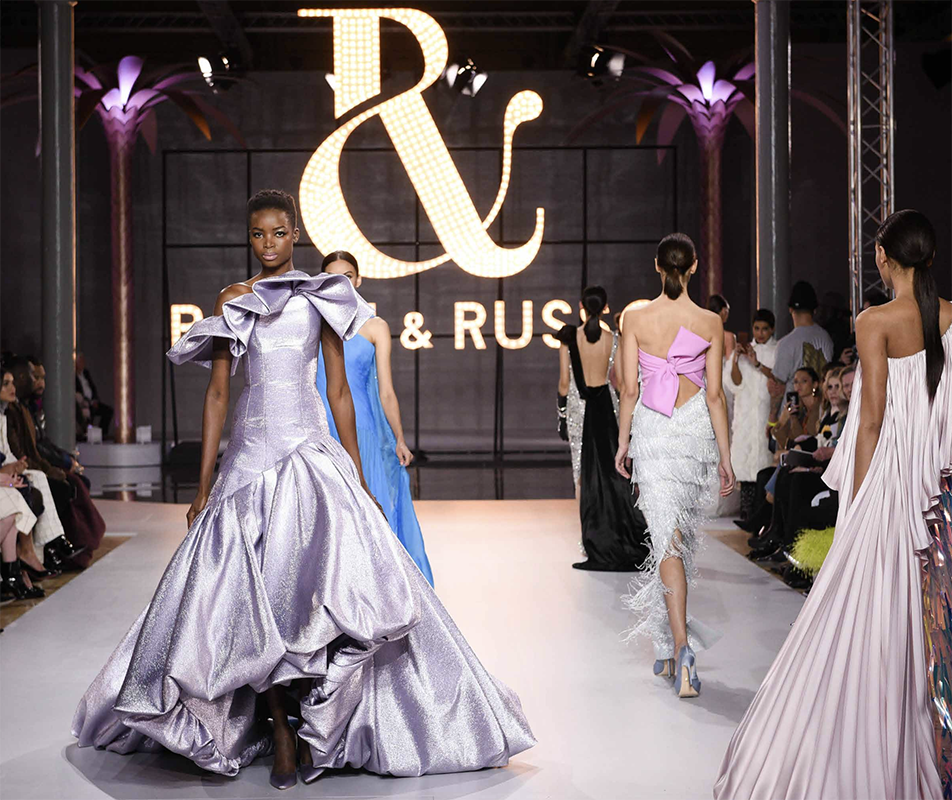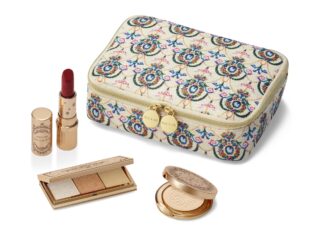This website uses cookies so that we can provide you with the best user experience possible. Cookie information is stored in your browser and performs functions such as recognising you when you return to our website and helping our team to understand which sections of the website you find most interesting and useful.
How hot design duo Ralph & Russo are leading the rise and rise of British couture
By Rachel Ingram | 2 April 2019 | Style
Designers Tamara Ralph and Michael Russo on why they chose not to make their home in Paris

London’s only couture house, Ralph & Russo, has been challenging the industry since its inception in 2007. In fact, in 2014, it became the first British brand in almost 100 years to be invited to the home of couture, Paris, to present its annual show alongside French couture houses at Paris Haute Couture Week. This privilege is closely guarded by Chambre Syndicale de la Haute Couture, a regulating commission that’s notoriously difficult to impress.
The creative mind behind the brand is Tamara Ralph, an Australian designer who made her first piece, a chainmail skirt, at the age of 13. “It’s something I’ve always loved to do,” Ralph says of designing. “I have several generations with couture and fashion in my family. I grew up around it and I loved it. Whenever I could, I would be sketching, stitching and draping, so it just came naturally.” The brand’s business head is fellow Aussie Michael Russo, chairman and CEO. Together, as partners in business and in life, the pair have created one of the most inspiring love stories the British fashion industry has seen, both on and off the runway.
Starting from humble origins with a single sewing machine, the duo, who met in London, now make bespoke gowns for a 1,000-strong client list of the world’s wealthiest and most influential women. While the brand was already a hit with those in the know – Ralph has been making custom-made dresses for the likes of Beyoncé as far back as 2013, when the singer burst on to the stage of the opening of her Mrs Carter World Tour wearing a bespoke embellished crystal and pearl bodysuit – it was well and truly thrust the global spotlight in 2017 when Meghan Markle chose to wear a Ralph & Russo dress for her engagement portrait with Prince Harry.
In 2013, exceptional annual growth of 400% saw the couple listed on Fortune magazine’s ‘40 under 40’, establishing Ralph & Russo as the first global fashion brand to have ever featured. More recently, they have expanded into ready-to-wear. As the brand’s success continues to snowball, so does its need for space, and in May this year, Ralph & Russo will relocate its atelier and head office to the emerging creative hub of White City in west London. Ahead of the move, at the 2019 Walpole Luxury Summit, the duo discuss the evolution of haute couture – and why the future is bright for British designers.
Why did you choose to make London the base of Ralph & Russo, rather than Paris, the traditional home of couture?
Michael Russo: It was a combination of things. First, it wouldn’t really make sense. Secondly, the elite customer was visiting London. What we were finding, especially with couture which requires a lot of fittings, is that the customer felt more comfortable coming to us because they were using London as a base for other things, from holiday housing to education. The vibe here made them feel more comfortable in the whole entire process. That was really one of the keys. >>
Related: Sahar Millinery founder brings a wild side to creative hat design as she prepares for Ascot

What was the biggest challenge with setting up a couture business in London?
MR: I think we had some challenges along the way, especially on the craftsmanship side. Right from the beginning, it was challenging finding the right people with the right skillset to work with. It was very limited when we first set up the brand here. Now, that’s now completely changed and we’re inundated with people wanting to work with us, which is great. We’ve seen a return to the youth wanting to learn the craft, as opposed to just wanting to be the designer. It also helped once we were officially credited by the Chambre Syndicale de la Haute Couture [allowing the brand to show its collections at Paris Couture Week]. Suddenly, we were this attraction for the rest of the craftsman in Europe, or internationally. We organically took a lot of the best craftsmen from Europe and other places around the world into London.
How closely do you follow fashion trends?
Tamara Ralph: I think about what the clients love and we understand what the woman wants, as well. Obviously, trends do matter to us. We understood where the market was going quite early on, where our client base was and what they needed, so we stayed true to that.
Tamara, you are essentially the perfect example of your clients. Do you think this is another element to your success?
TR: Yes, very much so. I think it’s important to understand your customer base, no matter what industry you’re in. At the start of the brand, we really wanted it to feel like a family, and all our customers to feel like a family. They responded to that. Customer service, at the end of the day, is free. It was one way where we were able to compete with the largest brands.
You started in couture and moved on to ready- to-wear, which is quite an unusual journey. Why did you do it that way around?
MR: We use couture as the real heart of the brand. We use couture to create the aspiration. It really does fuel the rest of the business. It was difficult along the way because for seven or eight years, we had to sacrifice a lot of revenue and sales. We had ladies come to us who wanted to spend £10,000 on a dress and we had to say no. When you’re staring a business, it’s difficult to do that, but we sustained that and weathered the storm, and in the long run it was the much better thing to do. It really created the aspiration and the desire we have now. These days, with the amount of enquiries we get from the couture show, we don’t even need a store. For every 100 calls, we might hit one or two sales of couture. The other 99 or 98 will buy into the brand with a shoe, a bag or ready-to-wear. We needed that time to really build the dream and build the awareness. Now it just monetises itself. >>
Related: Discover the style staples no gentleman's wardrobe is complete without

What has been the major shift in the fashion world in the last two years?
TR: There are always things that surprise us. Markets are changing all the time, clients are changing all the time. You have new regions that have come up as big spending clients. Even in the last two years we’ve seen a shift in who our couture buying client is.
How are you attracting these new customers and markets to couture?
MR: We make it accessible. It’s difficult to see a couture gown. If you want to see one, you have to book an appointment in Paris or Italy, and it’s difficult to get an appointment. It’s fine to see it in a couture show on a screen or in a magazine, but until you see it in person, it’s very different. You can only see the quality of the workmanship when you see the gowns in person. Part of our retail strategy is to educate the customer. Customers coming from Africa or South America, for instance, they can’t see couture easily, but as soon as you put it in front of them, it’s very difficult for them to walk next door to the shop and buy a piece of ready-to-wear. Making it more accessible was really going against the grain, because no other house was doing it. Couture has always been this sacred piece of clothing that’s hidden away, and is very difficult to get, and we sort of spun it on its head.
TR: It’s a balance. Although we have made it more accessible, we will keep it very exclusive, as well. The clients are buying into it in the end, because of the fact that it’s a unique, exclusive experience. It is something that not everyone can have. I think it’s always good to have youth in our designs. When we started couture, we realised there was a shift in the market. I think a lot of people assumed that couture was a dying industry, but we saw the opposite. We saw emerging markets and younger generations coming through and spending much more, so we tailored our collections to that.
Tamara Ralph and Michael Russo were speaking at the 2019 Walpole Luxury Summit
Read the full interview in Tempus Magazine's Style Edition, out now







